Why you should train your pelvic floor: Part I

I am sure many of you have heard of the pelvic floor at some point... right?
But did you know that the pelvic floor has 5 roles?
That's right, 5!!!
If you have experienced any of the common dilemmas listed in my previous blog post, (incontinence, bladder and bowel issues, pelvic pains, sexual pains) then it is more than likely that your pelvic floor has been challenged and might be struggling to perform one of its roles properly. The pelvic floor is a muscle which isn’t always well understood, and hopefully this blog will help you rethink this integral part of your body!
So what is the pelvic floor?
The pelvic floor is a web of muscle, fascia and fibrous tissue that sits like a hammock from your pubic bone to your tail bone.
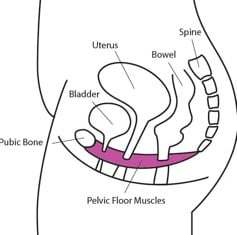
It has 5 important roles and in this blog I’ll outline 2 of them below:
1) Provides support to the Pelvic organs.
Like a hammock, the pelvic floor muscles will support anything that sits on top of it – which in this case is the pelvic organs.
For females, these organs include the bladder (where we store urine), uterus (commonly known as the womb/where the baby grows) and the bowel (the final part of the digestive tract). For males, the pelvic organs include the bladder and the bowel.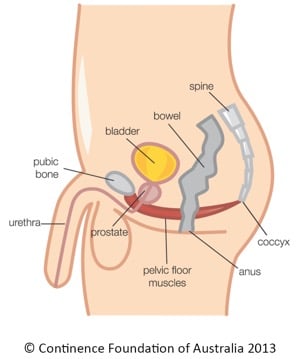
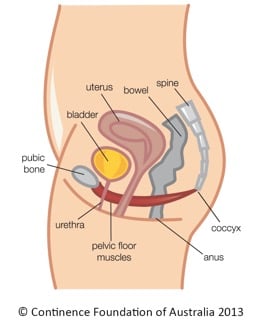
As well as pelvic floor muscles, we also have pelvic floor fascia. Think of fascia as little gyropes holding and suspending our organs by connecting them to the bony structures of the pelvis.
I like using the dock in a boat analogy to help explain how it works. So bear with me!
![]()
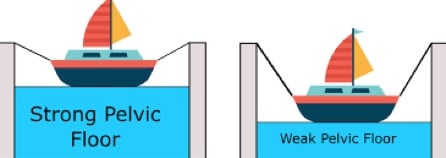
Imagine
- Your pelvis is the dock (the grey pillars)
- The boat represents the pelvic organs
- The water is your pelvic floor muscles
- The ropes that connect the boat to the dock is the pelvic floor fascia.
When there is excess strain on the pelvic floor – such as with pregnancy or with increased intra-abdominal pressure such as Chronic asthma/respiratory conditions or even a really bad cold; imagine the boat being quite a large and heavy boat. This increases the strain on the ropes (the pelvic floor fascia) however this is counteracted by the buoyancy of the water aka. strength of the pelvic floor muscles. If there are any weaknesses in our pelvic floor that may occur with disuse or changes in hormones such as menopause, the boat can start to sink aka. The pelvic organs can descend. We call this a prolapse and can mimic symptoms of incontinence, back pain, pelvic pains.
2) Controls the passing of your stools and urine
There are 2 layers of pelvic floor muscles - one deep, the other superficial.
The superficial pelvic floor muscles play an important role in providing closure to the vagina/anus so that we can hold/control passing urine or stool when we want to e.g. if we are in the middle of a meeting, we can generally hold our urine till the end of the meeting. This diagram below shows all the superficial muscles for females.
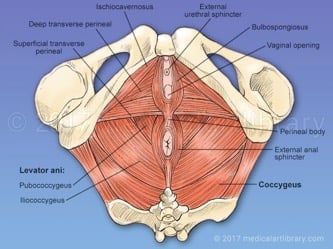
Even in high pressure situations such as running, coughing, sneezing, these muscles counteract the higher abdominal pressure so that we can hold in our poo/pee. If you experience any leaking during these activities, then pelvic floor management is key for you. Just as important as being able to hold our urine and stools, these muscles relax to let our urine and stools pass. If these muscles are too tight, it is difficult for them to relax and people may experience urine retention (difficulty to pass urine), constipation, painful sex and/or painful insertion of a tampon.
By now, you should know what the pelvic floor is and the first 2 functions of the pelvic floor
1) Supporting your pelvic organs
2) Being able to control the passing of your pee and poo otherwise known as continence.
If you have any issues with the 2 functions, please contact a Womens/Mens health professional to see how we could help. We’ll go through the remaining 3 functions of the pelvic floor in PART 2 of next blog post.

